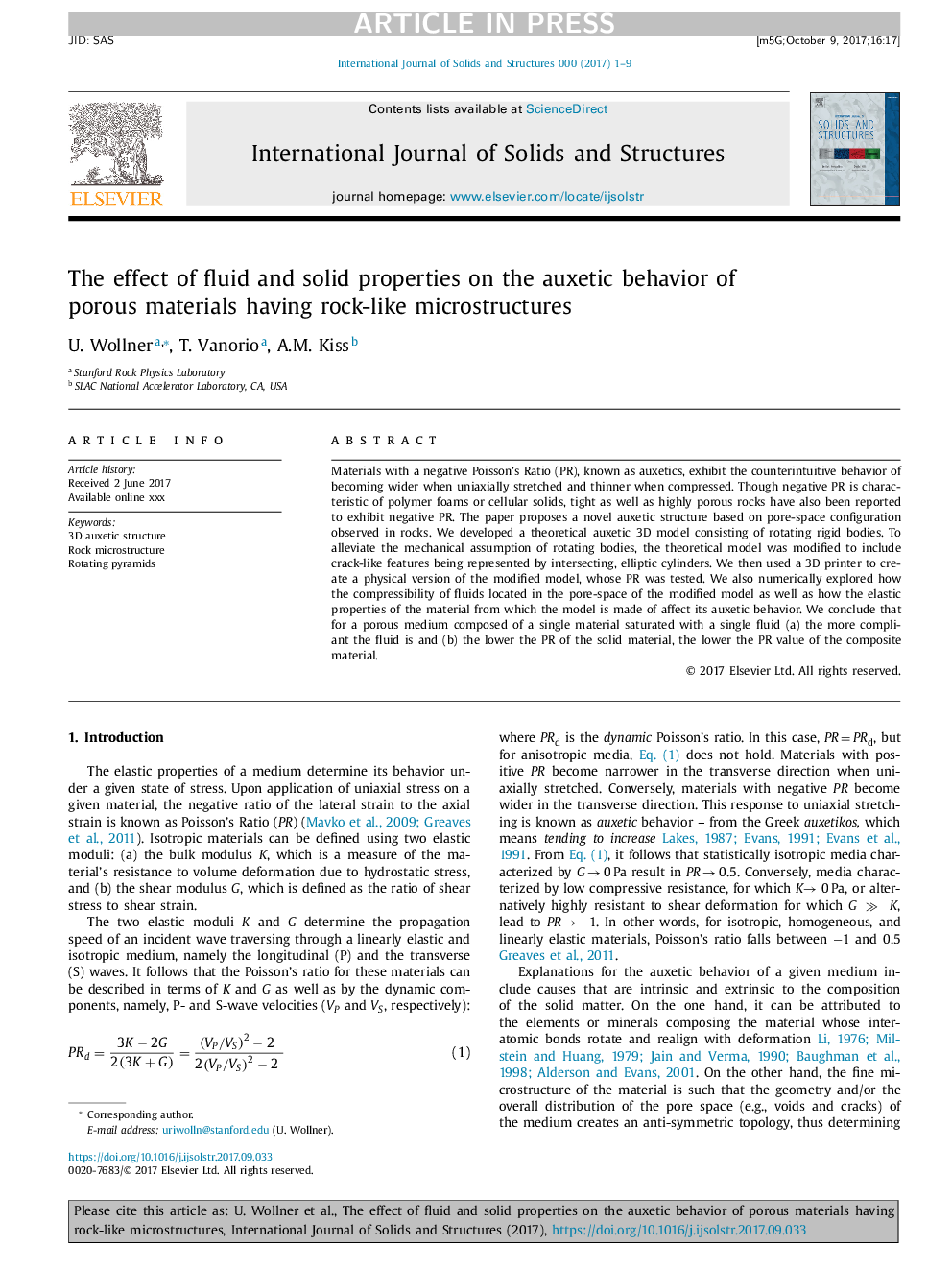| Article ID | Journal | Published Year | Pages | File Type |
|---|---|---|---|---|
| 6748488 | International Journal of Solids and Structures | 2018 | 9 Pages |
Abstract
Materials with a negative Poisson's Ratio (PR), known as auxetics, exhibit the counterintuitive behavior of becoming wider when uniaxially stretched and thinner when compressed. Though negative PR is characteristic of polymer foams or cellular solids, tight as well as highly porous rocks have also been reported to exhibit negative PR. The paper proposes a novel auxetic structure based on pore-space configuration observed in rocks. We developed a theoretical auxetic 3D model consisting of rotating rigid bodies. To alleviate the mechanical assumption of rotating bodies, the theoretical model was modified to include crack-like features being represented by intersecting, elliptic cylinders. We then used a 3D printer to create a physical version of the modified model, whose PR was tested. We also numerically explored how the compressibility of fluids located in the pore-space of the modified model as well as how the elastic properties of the material from which the model is made of affect its auxetic behavior. We conclude that for a porous medium composed of a single material saturated with a single fluid (a) the more compliant the fluid is and (b) the lower the PR of the solid material, the lower the PR value of the composite material.
Related Topics
Physical Sciences and Engineering
Engineering
Civil and Structural Engineering
Authors
U. Wollner, T. Vanorio, A.M. Kiss,
